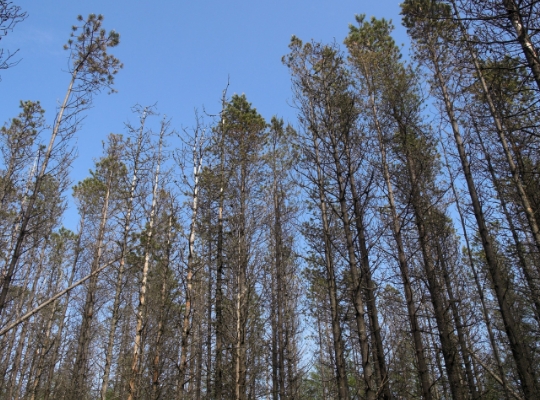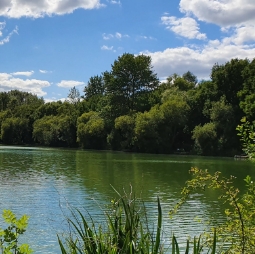Carrying out thinning operations
The intensity, frequency and timing of thinning operations can be modified to reduce select climate change risks.
Changes can be applied within a rotation to accelerate adaptation ahead of end-of-rotation measures, such as changing the species composition of a woodland using underplanting or enrichment planting, or by stimulating natural regeneration. In stands with high wind risk, late thinning can increase the risk of windthrow, therefore wind risk should be considered as part of planning forest operations, and incorporated early.
Benefits of thinning
As well as encouraging tree growth, thinning can offer the following adaptation benefits:
- Potentially improve stability (reduce wind risk) over the longer term by strengthening stems and roots through acclimatisation to wider spacing between trees. The earlier stand thinning is carried out, the lower the risk to trees.
- Reduce risk of wildfire if carried out in combination with high pruning, vegetation control and brash and deadwood management.
- May reduce risk of growth reductions or mortality during drought periods.
- May reduce drought risk to established trees by reducing competition for water, but can increase the risk to young or shallow rooted trees by removing protective shade.
- Reduce the impact of Dothistroma needle blight by increasing air movement and reducing humidity. Crown thinning increases air movement within the canopy and reduces humidity, which, combined with lower basal areas, can reduce rates of infection.

Guidance notes
- Some risks, especially windthrow and pathogens, may be most effectively controlled by applying early or pre-commercial thinning.
- Thinning provides opportunities to implement further adaptation strategies, including conversion to continuous cover forestry (CCF), and species change.
- More research is required to understand factors such as microclimate, stand structure and soil water on the impact of thinning in Britain.
For further advice see the UKFS Practice Guide ‘Adapting forest and woodland management to the changing climate’
Download the UKFS Adaptation Practice Guide
Printed copies are available to purchase from Forest Research.
"*" indicates required fields
Reducing climate change risks
The following risks may be reduced if the adaptation measure is applied appropriately:
Case study
Find out how a young Corsican pine stand in southeast England has been thinned to extend yield, minimise drought risks and Dothistroma needle blight.
Tools to assist decision-making
The impacts of thinning on stand wind risk should be considered when planning forest operations. ForestGALES allows forest managers to estimate the probability of wind damage to any conifer stand in Britain, according to site and stand properties.



